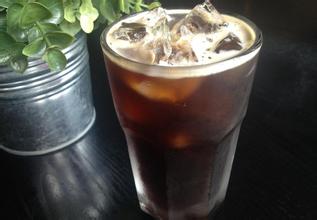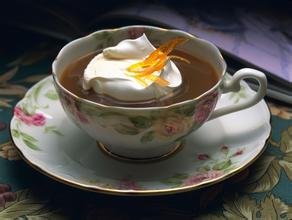Hawaiian Coffee flavor Hawaiian Coffee characteristic Hawaiian Coffee producing area
Kona coffee is grown on the slopes of Mauna Roa volcano on the southwest coast of Hawaii. In terms of flavor, Kona beans are closer to Central American coffee than Indonesian coffee. Its average quality is very high, carefully handled, medium texture, good sour taste, very rich flavor, and fresh Kona coffee is extremely fragrant. If you think your coffee is too thick, African coffee is too sour, Central and South American coffee is too rough, then "Kona" may be suitable for you. Kona is like a girl in the Hawaiian sunshine breeze, fresh and natural.
Kona coffee beans are average and neat in shape, with strong sour and sweet taste, moist and smooth taste. Because they grow on volcanoes and have high-density artificial farming, each bean can be said to be a spoiled "lady" with beautiful, plump and baby-like skin.
Although Hawaii is often affected by tornadoes, the climatic conditions are very suitable for the coffee industry. There is plenty of rain and sunshine, and there is no worry of frost. In addition, there is a strange natural phenomenon called "free shade". On most days, around 2 o'clock in the afternoon, white clouds appear in the sky, providing the necessary shade for the coffee trees. In fact, it is such superior natural conditions that make Arabica coffee in the Kona region produce more coffee than any other plantation in the world, and always maintain high quality, unique growth and climate environment to create a stronger coffee flavor.
But to the regret of coffee fans, only about 1400 hectares of coffee is produced. And because of Hawaii's high income and a large number of tourists, Kona coffee is so expensive that it is even sold as "kona blend" (no more than 5 per cent of Kona beans). Neighboring islands such as maui, kauai and molokai have also begun to grow coffee commercially.

Important Notice :
前街咖啡 FrontStreet Coffee has moved to new addredd:
FrontStreet Coffee Address: 315,Donghua East Road,GuangZhou
Tel:020 38364473
- Prev

Introduction to the characteristics of Dominica Coffee Flavor and taste Manor
In 1677, about 4,000 French lived in 11 villages in the west of the island. In 1697, France and Spain ceded the western part of the island to France according to the Leswick Treaty of the Alliance War, formally recognizing French sovereignty over Haiti in the western part of the Spanish island, and the eastern part of the Spanish island was called East Santo Domingo. France continues to develop its agricultural economy on the island of Hispaniola.
- Next

Introduction to the flavor and taste characteristics of Ethiopian Sidamo Chiso Coffee with fragrant and mellow smell
In February 1977, Lieutenant Colonel Mengistu Haier Maryam (MENGISTU HAILE MARIAM) launched a military coup and served as Chairman of the interim military Administrative Council and head of State. In 1979, the Ethiopian Labor people's Party Organization Committee, dominated by soldiers, was established to implement an one-party system. In 1984, the Ethiopian Workers' Party was formed according to the Soviet Communist Party model. Mengistu, September 1987
Related
- Detailed explanation of Jadeite planting Land in Panamanian Jadeite Manor introduction to the grading system of Jadeite competitive bidding, Red bid, Green bid and Rose Summer
- Story of Coffee planting in Brenka region of Costa Rica Stonehenge Manor anaerobic heavy honey treatment of flavor mouth
- What's on the barrel of Blue Mountain Coffee beans?
- Can American coffee also pull flowers? How to use hot American style to pull out a good-looking pattern?
- Can you make a cold extract with coffee beans? What is the right proportion for cold-extracted coffee formula?
- Indonesian PWN Gold Mandrine Coffee Origin Features Flavor How to Chong? Mandolin coffee is American.
- A brief introduction to the flavor characteristics of Brazilian yellow bourbon coffee beans
- What is the effect of different water quality on the flavor of cold-extracted coffee? What kind of water is best for brewing coffee?
- Why do you think of Rose Summer whenever you mention Panamanian coffee?
- Introduction to the characteristics of authentic blue mountain coffee bean producing areas? What is the CIB Coffee Authority in Jamaica?

